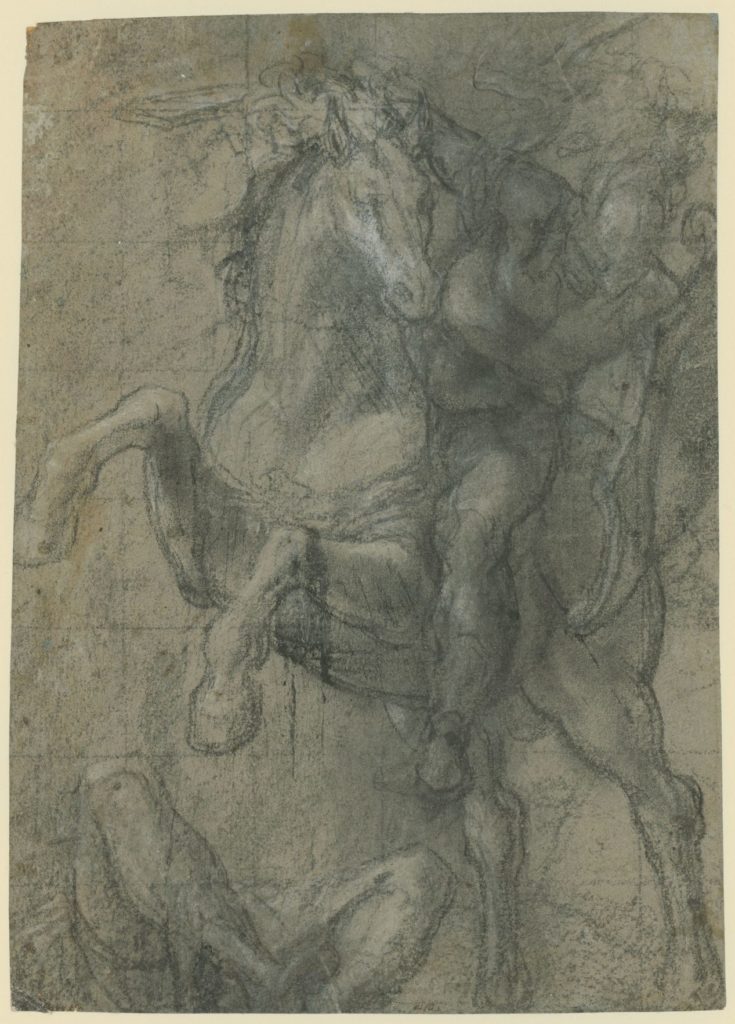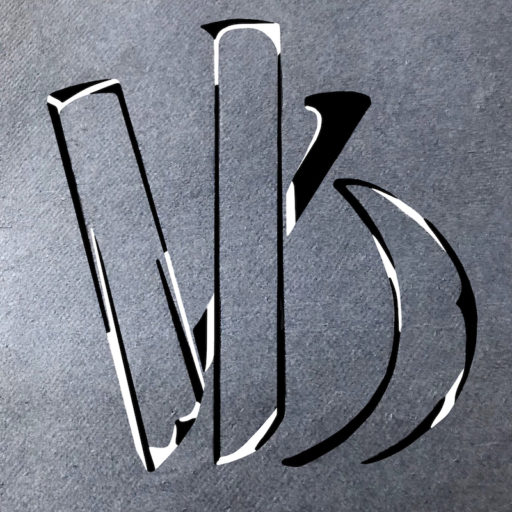
Artist | Titian (1490–1576)
Title | Horse and Rider Falling
Date | 1513–1537
Medium | Black chalk and white heightening on blue paper
Dimensions | 350 x 251 mm
Institution | Staatliche Graphische Sammlung, Munich (link to online catalogue)
Credit line | © Staatliche Grapische Sammlung Staatliche Graphische Sammlung München
Theme | Composing Space and Creating Action
Museum number | 2981 Z
Tiziano Vecellio (ca. 1485/90–1576), also known as Titian, was based in Venice throughout his career, although he received commissions from various families and courts on the Italian peninsula and beyond, including the Farnese, the Della Rovere, and the Habsburg families. The drawing of a horse and rider in Munich was originally attributed to Jacopo Tintoretto (1518/19–1594) but recognised as a work by Titian in 1924. It is a study for a man about to kill his enemy with his sword, in a position of triumph with his horse rearing over the fallen opponent. With the complex foreshortening of the figures, Titian possibly sought to show his superiority over his rival Pordenone (1484–1539). The squaring indicates that this drawing was used as a model for a large painting. It is likely associated with Titian’s destroyed painting of a battle in the Sala del Maggior Consiglio in the Doge’s Palace in Venice (completed 1538). Long believed to represent the battle of Cadore (1508), it probably actually referred to the battle of Spoleto (1155). Some differences between this drawing and surviving prints after Titian’s painting can be explained with changes made during the execution of the painting. Further studies for this painting are conserved in Oxford (also included in the Venice in Blue exhibition) and Paris. The compositional study in the Louvre includes a group of figures similar to that in Munich.
Titian likely chose to use blue paper for this drawing because this support enhances the contrast between energetic, dark hatchings and white heightening and thus amplifies the effect of virtuoso chiaroscuro. A controlled stream of light from the upper left makes the horse appear in bright light and the rider in dark shadow. These tonal effects enhance the dynamism of the scene and stress the superiority of the rider over his fallen enemy.
FAL
We are grateful for the guidance of Maria Aresin and Kurt Zeitler.
